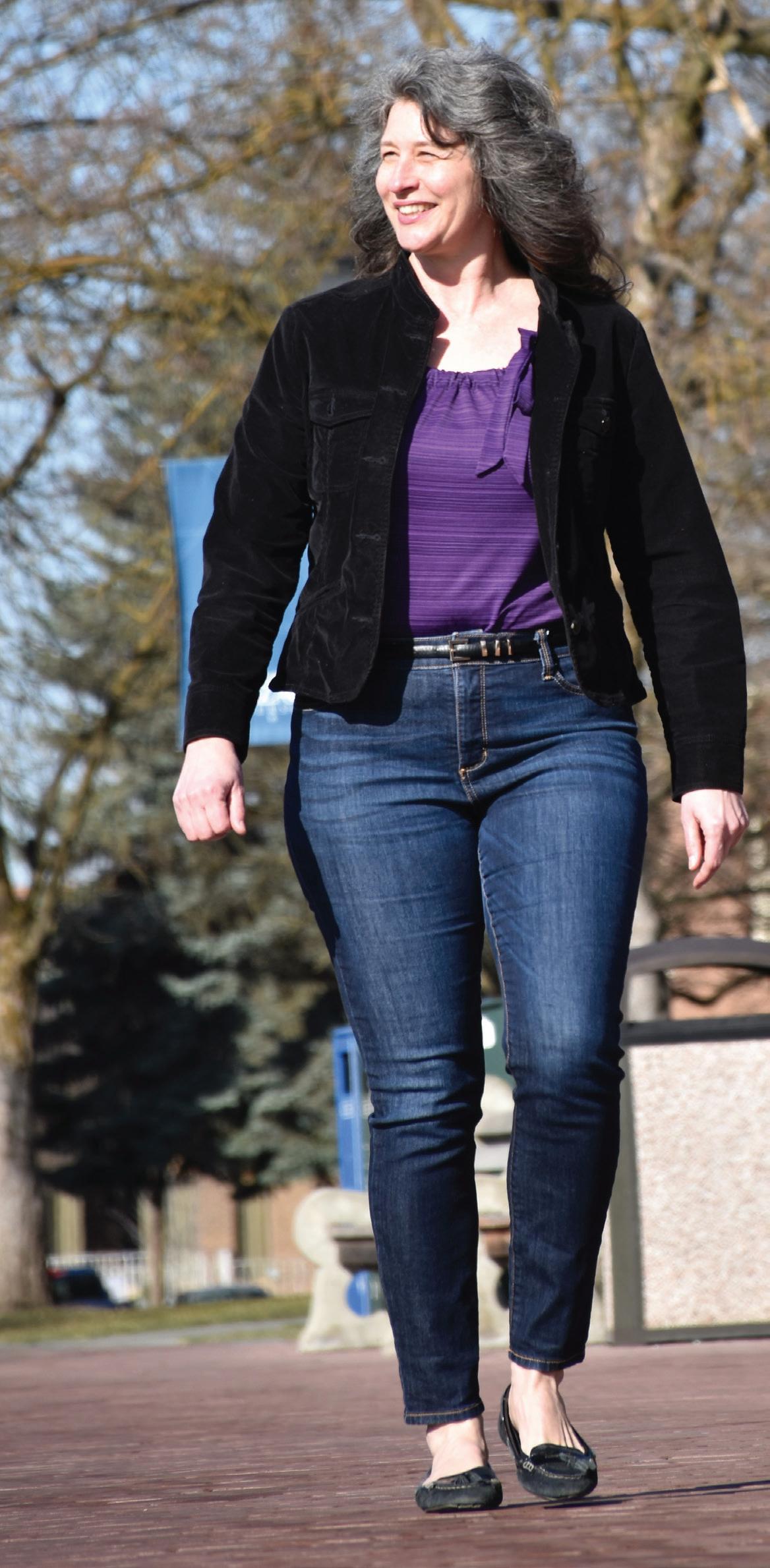CORONAVIRUS ROUNDUP
Lessons Learned Now will serve faculty upon return to the classroom
Nursing Lecturer Susan Edwards and her son work with IDD technicians in prep for her distance-learning conversion. “Nothing like a national emergency to get me over my fear of using technology in the classroom.” Psychology Professor Anna Marie Medina’s sentiment was echoed by many of her faculty colleagues as they transitioned face-to-face classes to digital formats for distance delivery in barely two weeks. “I’m proud of the way my colleagues have come together to support each other through this process. It makes me proud to be a Zag!” says Annie Voy, associate professor of Economics. “I’m grateful for the generosity of my technically-skilled colleagues who have gone out of their way to support those of us who are technically challenged,” Medina says. “This (enterprise) wouldn’t have been as successful without their kindness and good humor.” Some professors already had experience in digital course design, and the learning curve wasn’t so drastic. “Fortunately, I already used Blackboard to post notes, homework and quizzes. Most of my focus was on delivery of actual course content via Zoom meetings and recorded video lectures,” says Assistant Civil Engineering Professor Joshua Schultz. Others had to start from scratch getting acquainted with a new tool box for course delivery. Provost Deena González reports uninitiated faculty are learning to capture and share Ted-like talks on Blackboard, videos from Kanopy via Foley Library’s subscription, and use discussion boards that are easy in/easy out, among many other tools making distance delivery manageable. Page 6
“It was clear to me from the start that the objective was not to explore everything Blackboard could do for us, but to identify a few tools that wouldn’t be hard to introduce to our students in these circumstances,” says English Professor Heather Easterling. “I did make time to learn from IDD and CTA more about incorporating Zoom and Kaltura, but focused mostly on pedagogy.” Nursing Lecturer Susan Edwards adapted hands-on learning activities and in-person demonstrations to online learning. “Finding the right technology and learning how to use it effectively to deliver content has been challenging for me.” Accounting Lecturer Cathy DeHart rigged a computer cam over her desk on a plastic pipe contraption she built, to allow students to see her work through an accounting problem as if she was doing so on a whiteboard in her classroom. Most seem appreciative of their lessons learned through this conversion process, as Edwards describes, “This transition is challenging me in ways I could have never imagined, but I am growing into a better educator in the process.” Perhaps the greatest revelation of this transition is the uniquely powerful bond faculty members have formed with their students. Some have found themselves dealing with their students’ anxiety over the pandemic. “Instruction hasn’t been my greatest concern,” Voy says. “The hardest part has been trying to support my students, many whom are holed up in Seattle and other hard-hit areas.”
She sent her students a short survey during the transition to assess their practical and emotional preparedness for the circumstances. She found many consumed with fear and uncertainty surrounding the outbreak, and she worries about her ability to gauge their wellbeing without physical interaction. Easterling has heard students talk about their grief in losing their senior spring, intramurals and their community with students navigating academics and campus life together. “Teaching is very hard work, but the payoff of interactions and conversations with students can be as rich as it gets,” she says. Overall, the students are embracing this change, Edwards says. But she knows they are looking forward to meeting in person again to practice their skills. Easterling was reminded what remarkable, humane and thoughtful human beings her students are. “They have been resilient, patient and more concerned about me, at times, than about anything else.” “What has been very reinforcing to me has been the number of students I’ve connected with over the past week,” Medina says. “I’ve had more students in virtual office hours this past week than I had in the entire last year. What’s more, it’s been great to see them individually as people in their own particular contexts. They are very likeable people.” Most agree that they will come out of this severe bump in the road better equipped as educators when they return to their conventional classrooms in the fall.


